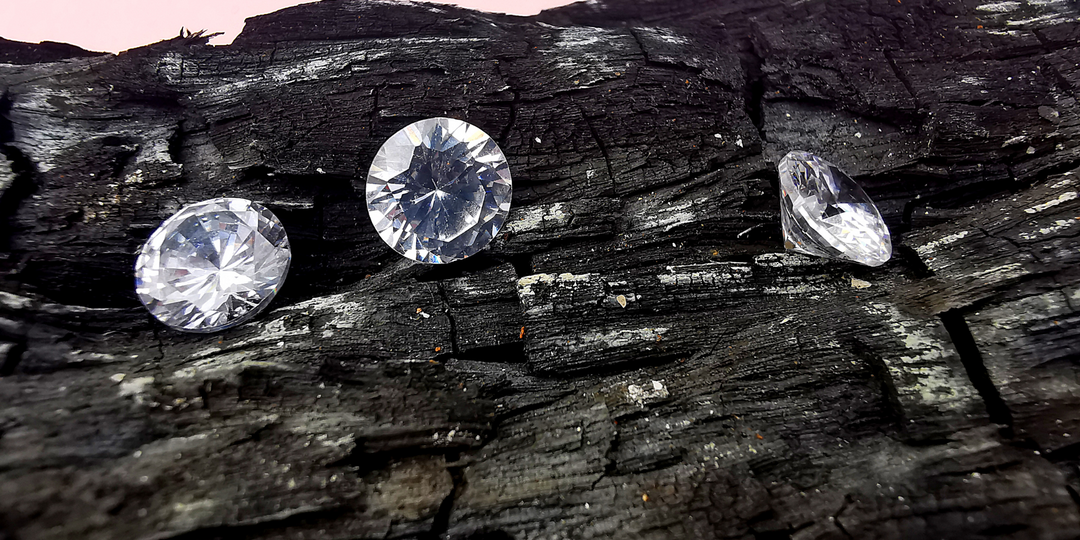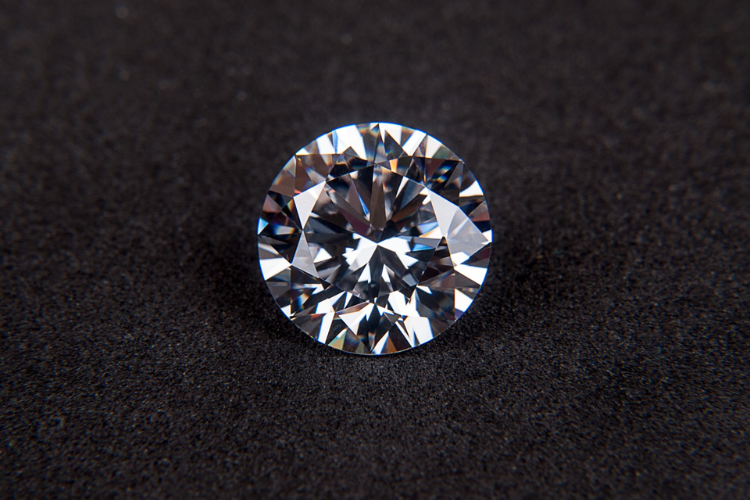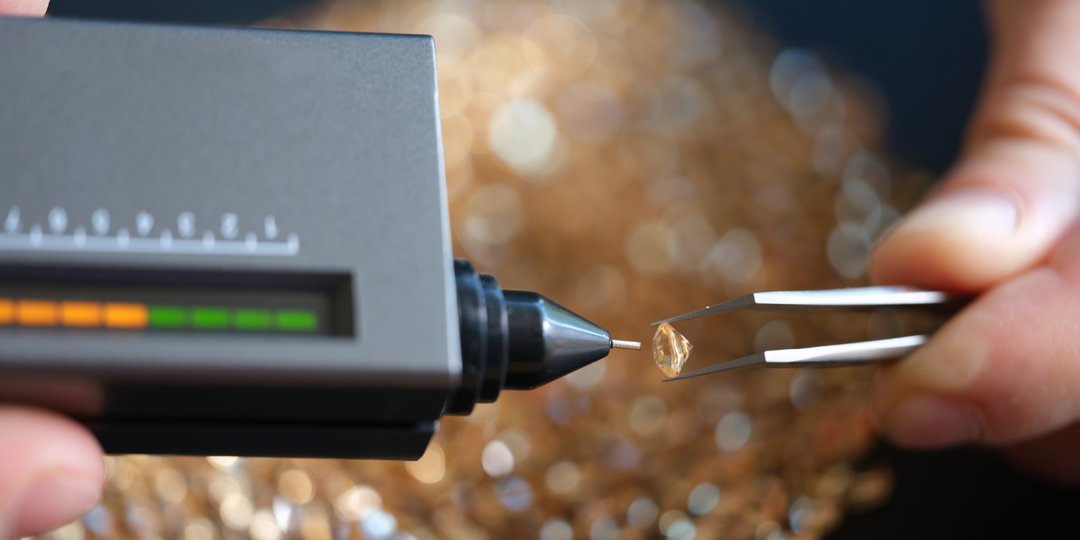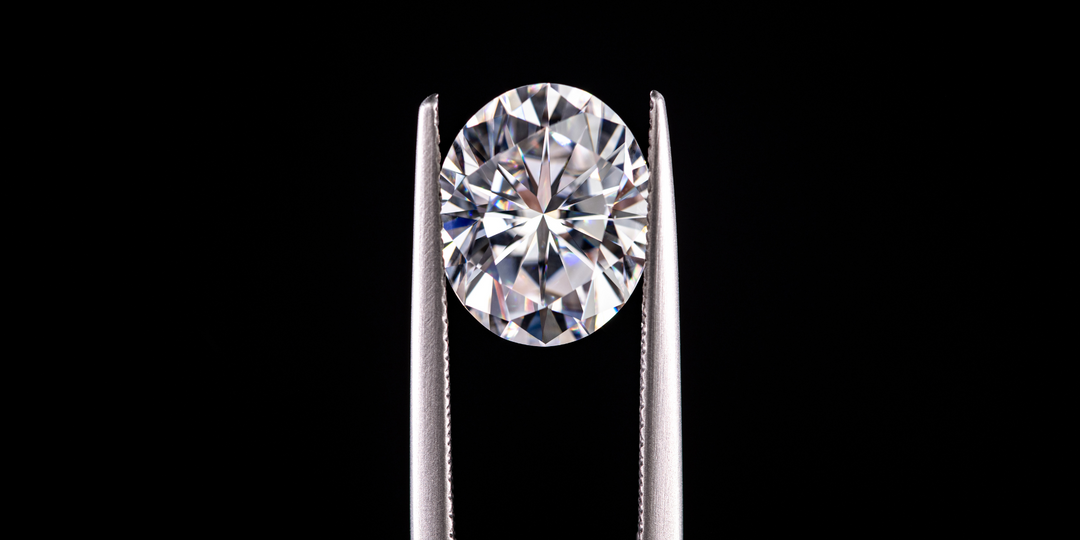Cushion Cut Lab Grown Diamond Ring: A Complete Guide
Are you getting ready to pop the question or celebrate a special occasion? Curious about making an eco-friendly and stunning choice with a cushion cut lab-grown diamond ring? You’re in the right place! This complete guide will help you understand everything you need about cushion cut diamonds, their variations, benefits, and how to choose the best one for you.
What Is a Cushion Cut Diamond?
A cushion cut diamond, often called a “pillow-cut,” is a unique shape that's all about that square or rectangular look with soft, rounded corners—like a cozy cushion! This cut features larger facets, which boost the diamond’s brilliance and fire, making it a favorite for those who want a mix of vintage charm and modern elegance.
Did you know the cushion cut has a fascinating history? It goes back to the 18th century and evolved from the “old mine cut” that was super popular back then. Thanks to advancements in diamond cutting tech, the cushion cut has been refined over the years, enhancing its sparkle and intricate designs.
One of the best things about cushion cut diamonds is their versatility. You can find them in different length-to-width ratios, so you can choose one that fits your style—whether you like a more elongated look or a square appearance. Plus, they’re known for their amazing fire, meaning they show off vibrant colors when you look at them from different angles.
That’s why cushion cut diamonds are often picked for engagement rings! Their timeless beauty and romantic vibe make them perfect for any occasion. You can set them in so many styles, from classic solitaires to trendy halo settings, which makes these diamonds a chic and flexible choice for any piece of jewelry.
Benefits of Choosing a Lab Grown Cushion Cut Diamond
Ethical and Environmental Considerations:
Lab-grown diamonds are made in Laboratory environments, which means no mining is needed. This really cuts down on environmental damage since traditional diamond mining can mess up the land and pollute water. Plus, lab grown diamonds steer clear of the ethical issues tied to conflict or “blood” diamonds, making them a more responsible choice.
Cost-Effectiveness
You’ll find that lab grown diamonds are usually more budget-friendly compared to natural ones. This means you can get a bigger or higher-quality diamond without breaking the bank. The savings can be pretty significant, making luxury more attainable without sacrificing quality or beauty.
Quality and Appearance
When it comes to looks, lab grown diamonds are identical to natural ones in terms of their optical, chemical, and physical properties. The cushion cut, with its rounded corners and stunning facets, really amps up the sparkle and elegance. Thanks to modern cutting techniques, lab grown cushion cuts shine bright and keep imperfections to a minimum.
Durability
The cushion cut is tough, with rounded corners that help prevent chipping. This makes it a solid choice for everyday wear, especially for cushion cut engagement rings.
Transparency and Traceability
Lab grown diamonds come with thorough certification that tells you all about where they come from and their quality. This traceability means you can feel good about what you’re buying, bringing peace of mind to your investment.
Cushion Cut Diamond Variations: Square vs. Elongated
| Aspect | Square Cushion Cut Diamonds | Elongated Cushion Cut Diamonds |
|---|---|---|
| Shape | Nearly square with a length-to-width ratio of 1:1 to 1:1.05. This gives a balanced and symmetrical appearance. | Rectangular with a length-to-width ratio greater than 1.15. This creates a more elongated and slender look. |
| Appearance | Balanced and even, with a small and neat appearance. It usually looks smaller than other shapes with the same carat weight. | Long and thin, with a bigger look. The long shape makes the diamond stand out more on the finger. |
| Corners | Rounded corners make the look softer, adding to the classic style and stopping chips. | Rounded corners keep the classic cushion cut look but add a modern touch. They also help prevent chipping. |
| Style | Classic and traditional. It mixes the shine of a round cut with the style of a square cut. | New but with old-fashioned charm. Gives a special mix of old and new styles. |
| Finger Appearance | Might look smaller than other shapes with the same carat weight, giving a simpler and more elegant appearance. | Can make fingers look longer and thinner, which many people think is nice. |
| Popularity | Popular for traditional engagement rings. Favored by those who appreciate classic and timeless designs. | Growing in popularity for its modern flair, this option is favored by those desiring a unique and more prominent look. |
| Brilliance | Mixes the shine of a round cut with the style of a square cut, giving a lovely sparkle and glow. | Depends on cut quality; a well-cut diamond enhances brilliance and overall appeal. |
| Suitability | Great for people who like simple designs and a steady, even look. | Great for people who like a unique and bigger look, mixing old-fashioned charm with modern style. |
Comparison: Cushion Cut vs. Other Diamond Shapes
Cushion Cut vs. Round Brilliant Cut
Style: The round brilliant cut is the most popular diamond shape, loved for its classic, timeless vibe. With 58 facets, it knows how to maximize brilliance and sparkle. On the flip side, the cushion cut has rounded corners and bigger facets, giving it a vintage, romantic flair that feels like a throwback to antique styles.
Sparkle: When it comes to sparkle, round brilliant diamonds are the champs! Their precise facet arrangement makes them shine like crazy. Cushion cuts are still pretty sparkly, but they tend to show off more fire (that beautiful coloured light reflection) while being a tad less brilliant overall compared to round cuts.
Shape: Round diamonds are perfectly circular, while cushion cuts can range from square to rectangular with nice, rounded edges that make them look like little pillows.
Cushion Cut vs. Princess Cut
Style: Princess cut diamonds are all about modern vibes with their sharp corners and square or rectangular shape. They give off a sleek, contemporary look, especially when you compare them to the softer, more romantic cushion cut.
Durability: Watch out for those pointed corners on princess cuts—they can chip easily, especially in solitaire settings. Cushion cuts, with their rounded edges, are generally tougher and handle wear better.
Sparkle: Both cuts are brilliant in their own right, but the princess cut packs a more concentrated sparkle thanks to its facet arrangement. Cushion cuts, with their larger facets, create those broad flashes of light that catch the eye.
Cushion Cut vs. Emerald Cut
Style: Emerald cuts are all about elegance with their elongated shape and step-cut facets that give off a stunning hall-of-mirrors effect. They highlight clarity and luster more than brilliance. On the other hand, cushion cuts bring that sparkling appearance with their brilliant cut facets.
Shape: Emerald cuts have a rectangular shape with cropped corners, while cushion cuts are more squarish with rounded edges.
Brilliance: Cushion cuts are brighter thanks to their facet layout, whereas emerald cuts have a subtler, sophisticated glow.
Cushion Cut vs. Oval Cut
Style: Oval cuts are elongated and symmetrical, offering a classy yet modern look that makes fingers appear longer. Cushion cuts, with their vintage charm, deliver a softer, romantic vibe.
Sparkle: Both cuts shine brightly, but oval cuts usually have a more even light distribution. Cushion cuts can show off unique light patterns known as "fire" because of their larger facets.
Shape: Oval cuts are uniformly rounded, while cushion cuts have straight edges with rounded corners, giving them that cozy, pillow-like shape.
Every diamond shape has its unique charm, and the perfect choice comes down to preference and style. Whether you’re drawn to the classic brilliance of a round cut, the sharp geometry of a princess cut, the elegant luster of an emerald cut, or the vintage allure of a cushion cut, there’s a diamond shape that’s just right for you!
Choosing the Best Cushion Cut Diamond: The 4Cs
Choosing the best cushion cut diamond involves understanding the 4Cs: Cut, Clarity, Color, and Carat Weight. Here’s a concise guide to help you make an informed decision:
Cut
When it comes to cushion diamonds, the cut influences how brilliant and sparkly they look. You’ll find cushion cuts range from square to rectangular shapes, with rounded corners and larger facets that amp up their shine. For the best light performance, aim for a depth and table percentage under 70%. And don't forget to check for Good, Very Good, or Excellent polish and symmetry grades!
Clarity
Clarity is all about those internal inclusions and external blemishes. The great thing about cushion cut diamonds is that they tend to mask inclusions nicely thanks to their unique faceting pattern. Still, if you want your diamond to have that stunning visual appeal, look for clarity grades of VS2 (Very Slightly Included) or better. These grades mean you won’t see those inclusions with the naked eye.
Color
Color grades for cushion cut diamonds go from D (colorless) to Z (light yellow or brown). They tend to show more color compared to other shapes, so if you want a diamond that looks near colorless, aim for a color grade between D and H. This range gives you a nice balance of quality without breaking the bank.
Carat Weight
Carat weight is what tells you how big the diamond is. Keep in mind that cushion-cut diamonds often look smaller than round diamonds of the same carat weight because of their deeper cut. To make sure your diamond looks bigger, consider going for a slightly larger carat weight. Just remember to balance this with the other 3Cs to keep the overall quality in check!
By carefully considering these factors, you can select a cushion cut diamond that offers the perfect blend of beauty, quality, and value.
Popular Settings for Cushion Cut Lab Grown Diamond Rings
Halo Setting
The halo setting is a favorite for cushion cut lab grown diamond rings! It features a stunning central cushion cut diamond that’s surrounded by a “halo” of smaller diamonds. This not only amps up the sparkle but also makes that center diamond look even bigger. If you’re into glamorous, eye-catching designs, this setting is perfect for you! Plus, those extra diamonds in the halo boost the ring’s brilliance and fire, making it a truly dazzling choice.
Prong Setting
The prong setting, or claw setting as some call it, is a classic choice for cushion cut diamonds. It uses metal prongs to hold the diamond securely, letting in light from all angles. This setting shows off the diamond's brilliance and clarity! Plus, it has a minimalist and elegant vibe, making it a versatile option that looks great with different band styles.
Bezel Setting
In a bezel setting, the cushion cut diamond is encircled by a thin metal rim that holds it securely in place. This setting provides excellent protection for the diamond, making it a great option for those with an active lifestyle. The bezel setting offers a sleek and modern look, and it can be particularly striking when paired with a cushion cut diamond. It also minimizes the risk of the diamond getting chipped or damaged, ensuring durability and longevity.
Split Shank Setting
The split shank setting features a band that splits into two or more strands as it approaches the center diamond. This design creates a unique and elegant look, adding extra visual interest to the cushion cut engagement ring. The split shank setting can enhance the cushion cut diamond's appearance by drawing attention to the center stone. It also provides additional support and stability for the diamond, making it a practical yet stylish choice.
Each of these settings offers a distinct look and feel, allowing you to choose the one that best matches your style and preferences. Whether you prefer the dazzling halo, the classic prong, the modern bezel, or the elegant split shank, a cushion cut lab grown diamond engagement ring is sure to make a stunning statement.
Certification and Buying Tips for Cushion Cut Lab Grown Diamonds
When purchasing a cushion cut lab grown diamond, certification, and careful evaluation are crucial to ensure you get the best value and quality.
Always look for diamonds certified by reputable gemological institutes like the Gemological Institute of America (GIA) or the International Gemological Institute (IGI). These certifications verify the diamond’s authenticity and provide a detailed assessment of its 4Cs: cut, color, clarity, and carat weight. A certified diamond ensures transparency and trust in your purchase.
Buying Tips
- Cut Quality: Cushion cut diamonds can look very different. Look for a well-proportioned cut with a balance of brilliance and fire. Ideal cut measurements are table 59.5-70 and depth 65-70.
Here’s a table categorizing the ideal cut measurements for cushion cut diamonds from Excellent to Poor:
| Parameter | Excellent | Very Good | Good | Fair | Poor |
|---|---|---|---|---|---|
| Depth | 61% - 67% | 58% - 60% or 68% - 70% | 56% - 57% or 71% - 73% | 54% - 55% or 74% - 76% | <54% or >76% |
| Table | 55% - 65% | 53% - 54% or 66% - 68% | 51% - 52% or 69% - 70% | 49% - 50% or 71% - 72% | <49% or >72% |
| Girdle | Thin to Slightly Thick | Very Thin to Thick | Very Thin to Very Thick | Extremely Thin to Thick | Extremely Thin to Extremely Thick |
| Culet | None | Very Small | Small | Medium | Large or Very Large |
| Polish | Excellent | Very Good | Good | Fair | Poor |
| Symmetry | Excellent | Very Good | Good | Fair | Poor |
| Length-to-Width Ratio | 1.00 - 1.05 (Square) 1.15 - 1.30 (Rectangular) |
1.06 - 1.10 (Square) 1.31 - 1.35 (Rectangular) |
1.11 - 1.15 (Square) 1.36 - 1.40 (Rectangular) |
1.16 - 1.20 (Square) 1.41 - 1.45 (Rectangular) |
>1.20 (Square) >1.45 (Rectangular) |
- Color and Clarity: Cushion cuts tend to show color more than other shapes. Aim for a color grade of H or higher for a near-colorless appearance. For clarity, VS2 or higher is recommended to ensure the diamond is eye-clean.
- Carat Weight: Determine the carat weight based on your budget and preference. Cushion cuts can appear smaller than round diamonds of the same carat weight, so you might consider going slightly larger.
- Length-to-Width Ratio: This ratio affects the diamond’s shape. A ratio close to 1.00 will give a square appearance, while a ratio between 1.10 and 1.20 will appear more rectangular.
- Lab Grown Advantages: Lab grown diamonds are eco-friendly and cost-effective. They offer the same physical, chemical, and optical properties as natural diamonds but at a lower price.
By following these tips and ensuring proper certification, you can confidently purchase a stunning cushion cut lab grown diamond that meets your expectations.
Conclusion
Cushion cut diamond rings are the perfect blend of timeless elegance and modern sustainability. This guide has everything you need to know about the unique features of cushion cuts, their variations, and settings. By opting for a lab grown diamond, you're making a beautiful and responsible choice for your special occasion!
Thinking about finding the perfect cushion cut lab grown diamond ring? Start your search today and connect with a community of eco-conscious shoppers and diamond lovers who appreciate quality and sustainability. Your dream ring is just around the corner!









